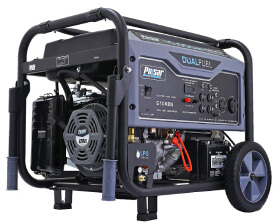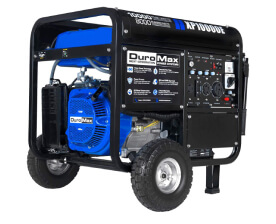For many residential and commercial buildings, powerful generators such as 10,000-watt generators are a handy and common addition to protect against power outages. However, there are several reasons why a generator can fail, and without both preventive measures and regular maintenance, generator problems will no doubt occur. When it comes to generators, prevention is always better than the cure, and you can avoid most of the common generator problems simply by following a regular maintenance and cleaning schedule.
Every now and again, however, there are problems that arise that can cause a generator to malfunction. Here are some of the most common generator problems and what you can do to fix them:
- Generator is Low on or Runs Out of Fuel
One of the most common generator problems is lack of fuel. If the fuel level is too low or there is no more fuel in the tank, the generator will not start at all. If your generator is not starting, the first thing you have to check is whether your generator still has enough fuel. If the fuel has been sitting in the tank for a long time, it might have leaked out, or if the tank was not closed properly, it could have evaporated.
Most of the time, generator problems related to the lack or loss of fuel are due to human error or pump system problems. There is also the chance that the fuel level gauges are not working properly. If the fuel has been sitting prone for a long time, it could become stagnant. High-quality generators have automatic shut-down systems that will prevent the generator from turning on if the fuel reserves are too low in order to prevent any damage to the generator.
Depending on the amount and condition of the fuel remaining in your tank, you can either just top-off the fuel or replace it completely.
- Block Heater Worn Down
The block heater is an important part of your generator because it is how coolant gets circulated inside. If the block heater is not working properly, the oil in your generator can thicken up and stop circulating properly. The block heater can wear out quickly because it runs continuously. You need to replace your block heater once it shows signs of wear and tear.
- Coolant Levels Too Low
If your block heater fails, it will affect both coolant levels and performance. Another reason for coolant problems is external or internal leaking. The block heater hose where the coolant runs through can easily wear down due to the intense heat that comes from the block heater, so you need to regularly check and replace this hose. Some generators will have alarms that will sound and will automatically shut down the system if there is a problem with coolant levels.
- Battery Is Dead
Just like any system with a battery, there is only a certain amount of time that your generator’s battery will work before it dies. As a general rule of thumb, a generator battery will only last 3-4 years before it needs to be replaced.
- Leaking Fuel
If your fuel has been sitting in your generator’s tank for a long time, it could leak once you start up the generator again. These days, many fuel systems are prone to air impacting when they start up. Worn down or broken belts as well as faulty valves can also be a cause of fuel leaking back into the tank. You should get a professional to check these parts and replace them if fuel leakage is the problem.
- Pest Infestation
Generators that are in storage for a long time tend to attract pests that nest or burrow in and around the generator. You can check for signs of pest infestation, such as droppings, nests, pest damage, or even the pests themselves. If you have pest damage, you will need to remove the pests first before you can repair or replace any broken generator parts.
- Weather Damage
If your generator is exposed to the elements, it will get weather damage over time, especially if you live in a place where there is extreme cold or rain. Moisture is a huge problem for generators because it can cause rusting and corrosion to the metal parts of your generator. The cold can cause rusting or freezing to both the mechanical parts and the liquid components of your generator. Depending on the weather damage, you should replace broken or damaged parts, but if the damage is too severe, you might need to replace your whole generator.
- “Not in Auto”
Recent models of expensive generators, especially models such as 10,000-watt generators, have automatic switches to turn off the generator. If you read “not in auto” on the generator readout, it is most likely that the generator has been switched to the “Off/Reset” mode on the main switch. You must reboot the whole system to return your generator to working mode.





